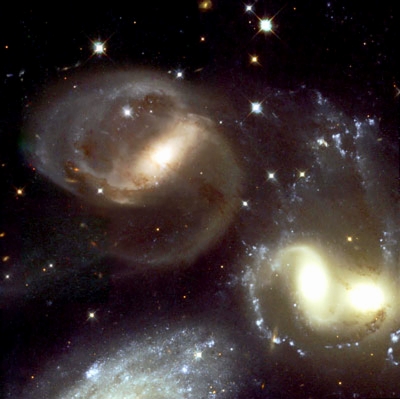
November 26, 2000 Madrid, Spain - Galaxies in collision have fascinated scientists since 1877 when French astronomer Edouard Stephan discovered the first cluster that became known as Stephan's Quintet. The name applied to a group of five galaxies (NGC7317, 7318A, 7318B, 7319 and 7320) about 270 million light-years from earth in the constellation Pegasus. A sixth galaxy, NGC7320C, shown at the bottom of the above photograph, was originally thought to be part of the colliding cluster of galaxies. When its red shift (increasing wavelength emitted by receding celestial bodies) was measured in 1961, it was moving away from earth much more slowly (800 km/second) compared to the other galaxies (6000 km/second). That puzzling and discordant measurement provoked some scientists to argue that red shift is not related to distance and that the universe was not expanding.
Click here to subscribe and get instant access to read this report.
Click here to check your existing subscription status.
Existing members, login below:
© 1998 - 2024 by Linda Moulton Howe.
All Rights Reserved.

